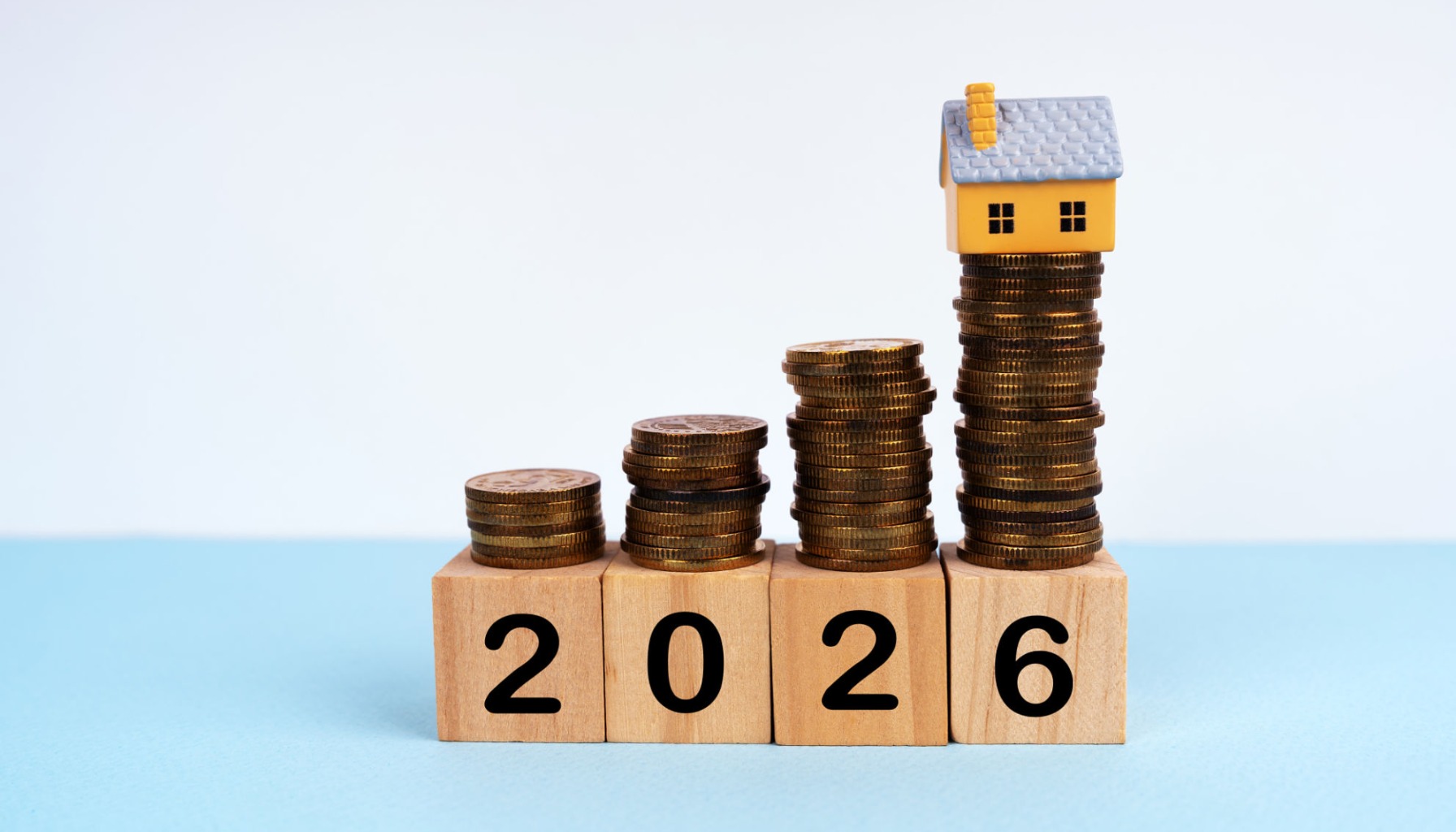If you're like me, you've probably been refreshing your screen for months, waiting for that magical headline announcing that mortgage rates are finally coming down in a big way. Well, the latest Fannie Mae mortgage rate predictions for 2025 and 2026 give us a clearer picture, and while it’s not the dramatic drop we all hoped for, it signals a slow and steady path toward relief.
Based on their August 2025 outlook, Fannie Mae forecasts that the 30-year fixed mortgage rate will end 2025 at 6.5% and continue its gradual decline to 6.1% by the end of 2026. This is a slight upward revision from their previous forecast, telling us the journey back to normalcy might take a little longer than expected.
Mortgage Rates Predictions 2025 and 2026 by Fannie Mae
The Official Numbers: What Fannie Mae is Forecasting
Let's get right to the heart of it. Fannie Mae’s Economic and Strategic Research (ESR) Group is one of the most respected voices in the housing industry. When they speak, I listen. Their forecasts help shape how lenders, builders, and homebuyers think about the future.
Here's a breakdown of their latest predictions compared to their previous ones. I find that looking at the change is often more telling than just looking at the new number itself.
| Metric | New Forecast (August) | Old Forecast (July) | What This Tells Us |
|---|---|---|---|
| Mortgage Rate (End of 2025) | 6.5% | 6.4% | The path down is a bit stickier than we thought. |
| Mortgage Rate (End of 2026) | 6.1% | 6.0% | The trend is still downward, just at a slower pace. |
| Total Home Sales (2025) | 4.74 million | 4.85 million | Higher rates continue to put a damper on sales activity. |
| Total Home Sales (2026) | 5.23 million | 5.35 million | A recovery is still expected, but it's been pushed out slightly. |
Seeing these numbers in a table makes one thing clear: the overall direction is positive, but the optimism has been tempered with a dose of reality. The theme here is “higher for longer.”
But Why the Change? Digging Into the “Why”
A forecast is only as good as the economic data behind it. So, why did Fannie Mae nudge their rate predictions up? It really boils down to two key factors that I watch like a hawk: inflation and economic growth.
The Stubborn Inflation Problem
You've felt it at the grocery store and the gas pump. Inflation has been the main villain in our economic story for the past couple of years. The Federal Reserve's primary weapon against it is raising interest rates.
- Fannie Mae's CPI Forecast: They now expect the Consumer Price Index (CPI), a key measure of inflation, to be at 3.3% at the end of 2025.
- Why it Matters: As long as inflation remains “sticky” and above the Fed's 2% target, the Fed has little reason to aggressively cut its own rates. And the Fed's rate is a major driver of mortgage rates. In my experience, you can't have truly low mortgage rates without having inflation firmly under control. This new CPI forecast suggests the fight isn't over yet.
A Slower-Growing Economy
The other piece of the puzzle is Gross Domestic Product (GDP), which is the scorecard for our entire economy. Fannie Mae slightly lowered its GDP growth forecast for 2025 to 1.1%. A slowing economy can sometimes lead to lower rates, but when paired with persistent inflation, it creates a tricky situation. It means the economy isn't growing fast enough to shake off inflation, forcing the Fed to keep its foot on the brake just a little longer.
What This Forecast Means for You
Numbers on a page are one thing, but what does a 6.5% mortgage rate in 2025 actually mean for your wallet and your plans?
For Hopeful Homebuyers
If you're waiting to buy a home, this news might feel a bit frustrating. The dream of a 5% rate in 2025 seems to be fading. However, let's add some perspective. A rate of 6.5% is still significantly better than the 7-8% peaks we've seen.
My advice? Don't just focus on the rate you can't control. Focus on what you can control:
- Your Credit Score: A higher score can get you a better rate, even in a high-rate environment.
- Your Down Payment: A larger down payment reduces the size of your loan and can help you avoid Private Mortgage Insurance (PMI).
- Your Debt-to-Income Ratio: Paying down other debts makes you a more attractive borrower.
The strategy of “marry the house, date the rate” still holds true. Buying a home you can afford now and refinancing later when rates eventually drop further (perhaps in 2026 or beyond) is a valid path forward.
For Homeowners Thinking of Refinancing
If you're one of the millions of homeowners sitting on a mortgage rate of 3-4%, this forecast confirms what you probably already knew: it doesn't make sense to refinance anytime soon. This phenomenon, often called the “golden handcuffs,” is a major reason why the housing market has felt so stuck. People don't want to sell and give up their fantastic rate, which keeps the supply of existing homes for sale incredibly low.
Related Topics:
Mortgage Rates Predictions Next 90 Days: August to October 2025
Mortgage Rates Predictions Next 60 Days: August to October 2025
Mortgage Rate Predictions for the Next 3 Years: 2026, 2027, 2028
The Ripple Effect on the Housing Market
Fannie Mae's predictions for mortgage rates don't exist in a vacuum. They have a direct impact on the number of homes sold and the total volume of mortgages being written.
- Home Sales Outlook: With higher rates sticking around, Fannie Mae now projects fewer home sales in both 2025 (down to 4.74 million) and 2026. This isn't a crash; it's a market that is slowly thawing, not boiling over.
- Mortgage Originations: Fewer sales and fewer refinances mean fewer new mortgages. The forecast for mortgage originations was also revised down for both years.
From my perspective, this points to a housing market that will continue to favor sellers due to low inventory, but one where buyers will have slightly more breathing room than in the frenzied years of 2021-2022. Bidding wars will be less common, and homes may sit on the market for a few weeks instead of a few hours.
My Final Take: Adjusting Our Expectations
After analyzing Fannie Mae's report, my biggest takeaway is the need for a collective adjustment of our expectations. The era of ultra-low 3% mortgage rates was a historical anomaly, fueled by a global pandemic. It was not the norm.
The “new normal” for the next couple of years looks like it will be in the 6% range. While that's a tough pill to swallow for those who remember the rock-bottom rates, it's a far more historically average place to be. This forecast doesn't point to a housing market collapse. Instead, it points to stabilization. It suggests a market where prices grow more slowly, buyers have to be more disciplined, and the wild swings of the past few years finally start to calm down.
The road ahead is one of gradual improvement. The light at the end of the tunnel is there, but it seems we'll be in that tunnel for a little while longer.
Invest Smarter in a High-Rate Environment
With mortgage rates remaining elevated this year, it's more important than ever to focus on cash-flowing investment properties in strong rental markets.
Norada helps investors like you identify turnkey real estate deals that deliver predictable returns—even when borrowing costs are high.
HOT NEW LISTINGS JUST ADDED!
Connect with a Norada investment counselor today (No Obligation):
(800) 611-3060
Also Read:
- Mortgage Rates Predictions 2026 by Warren Buffett’s Berkshire Hathaway
- Will Mortgage Rates Go Down in 2025: Morgan Stanley's Forecast
- Mortgage Rate Predictions 2025 from 4 Leading Housing Experts
- 30-Year Fixed Mortgage Rate Forecast for the Next 5 Years
- 15-Year Fixed Mortgage Rate Predictions for Next 5 Years: 2025-2029
- Will Mortgage Rates Ever Be 3% Again in the Future?
- Mortgage Rates Predictions for Next 2 Years
- Mortgage Rate Predictions for Next 5 Years
- Mortgage Rate Predictions: Why 2% and 3% Rates are Out of Reach
- How Lower Mortgage Rates Can Save You Thousands?
- How to Get a Low Mortgage Interest Rate?
- Will Mortgage Rates Ever Be 4% Again?



